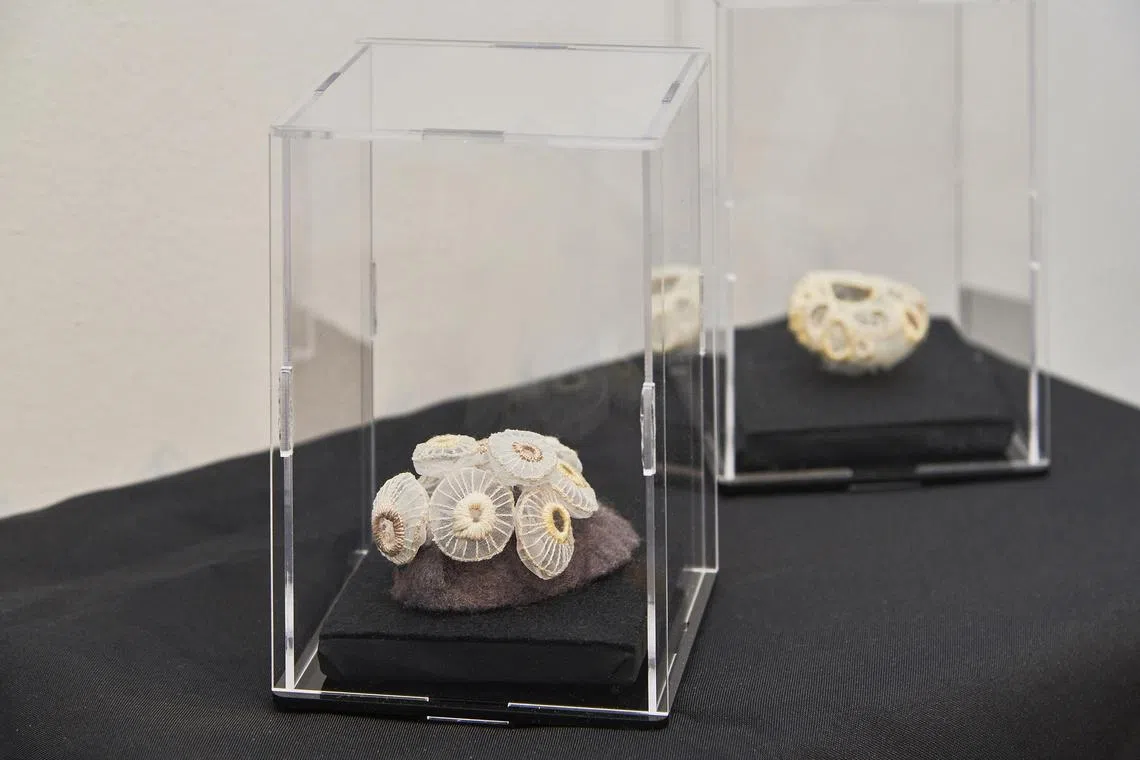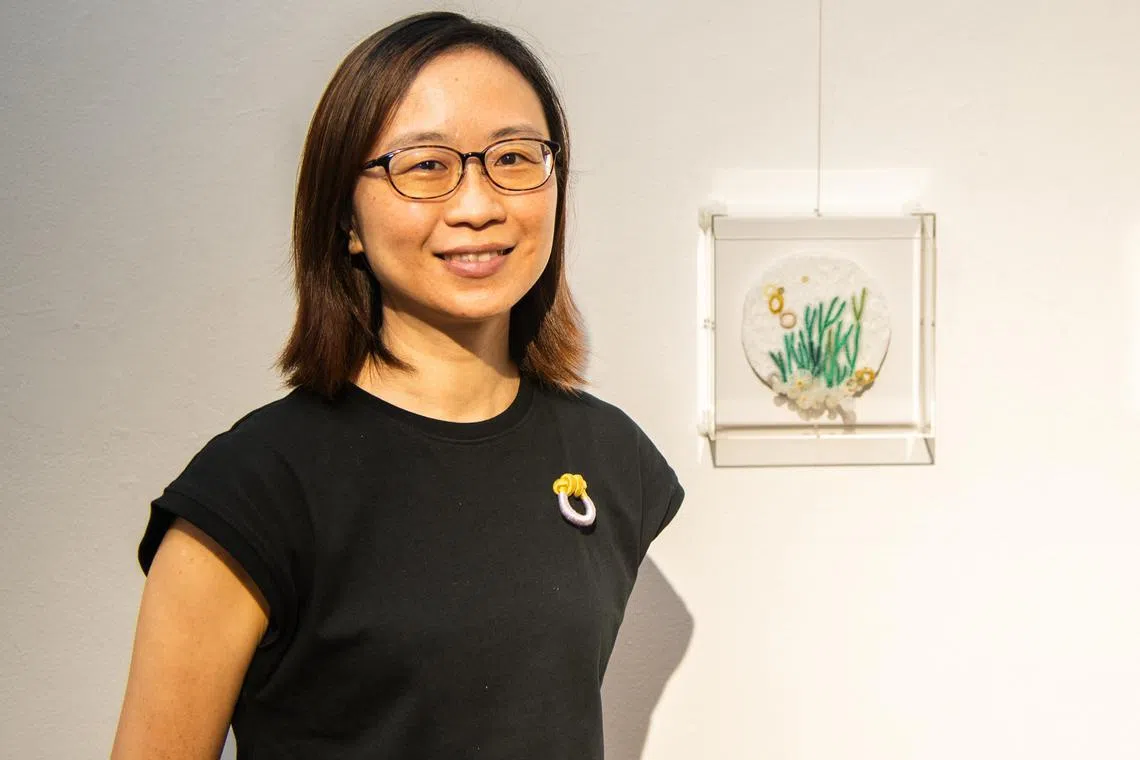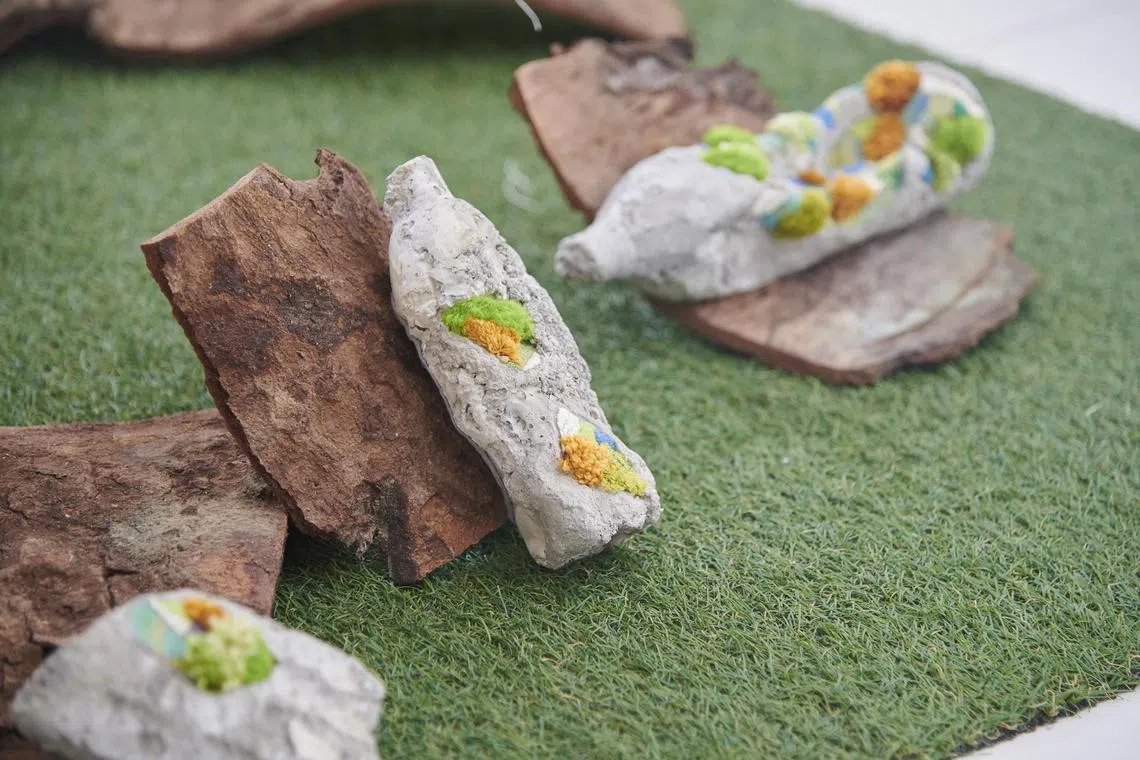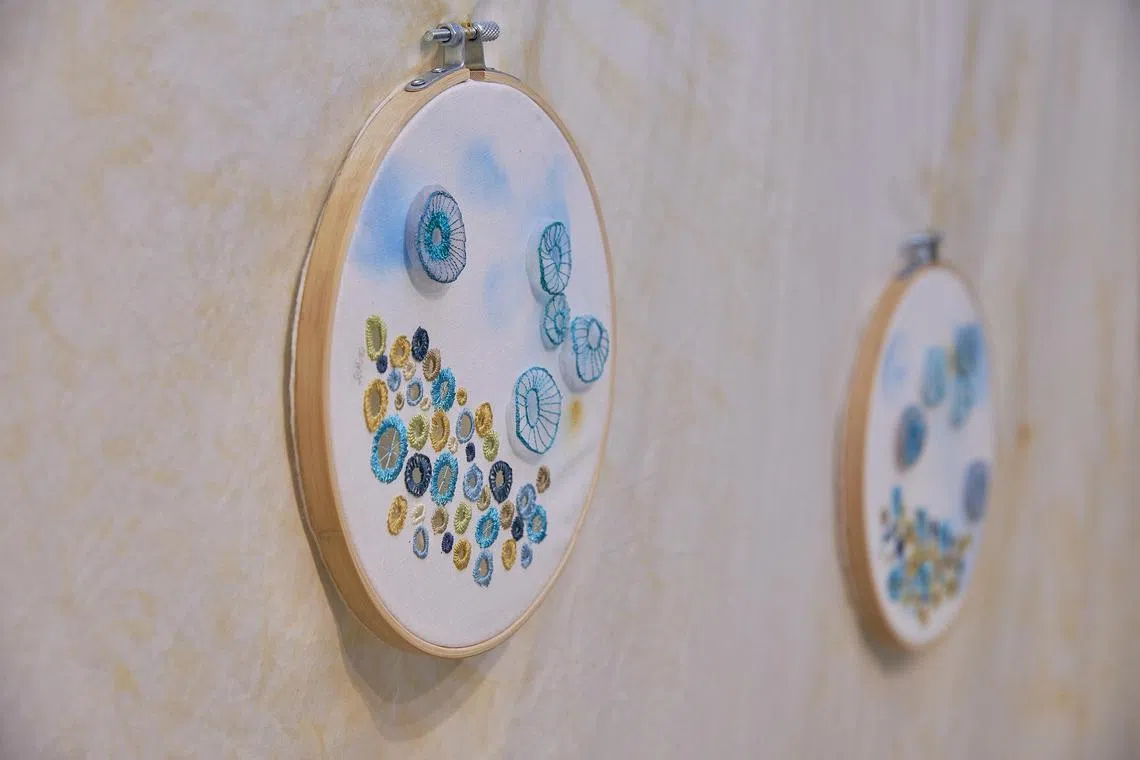Agatha Lee: Turning Singapore’s waste crisis into sustainable art
Meet the woman whose delicate embroidery urges us all to rethink our throwaway culture

THE moment that changed Agatha Lee’s career trajectory was an ordinary one. She was standing in front of her wardrobe, staring at the sheer volume of clothes she owned, many of which she no longer wore.
This scene may be familiar to many Singaporeans, but for Lee, it was a catalyst.
She took to her sewing machine and began to mend and repurpose fabrics, extending their usefulness and prolonging their lives to, in her own words, “continue their narratives”.
“It wasn’t just about sewing – it was about how to think differently about consumption and the value we place on the things we own,” says the former policymaker at the National Environment Agency (NEA).

Gradually, her night-time hobby grew into a full-fledged environmental mission. She reinvented herself as a sustainable fashion advocate, helping others transform discarded textiles into striking pieces that challenge society’s throwaway culture.
Then, another transformation followed. She started experimenting with large-scale art installations, weaving discarded garments, fabric scraps, and household textiles into intricate tapestries. These artworks conveyed powerful narratives about waste, renewal, and the hidden histories embedded within everyday clothing.
Today, Lee identifies as a textile artist, storyteller of sustainability, and champion of mindful consumption. Her delicately embroidered creations invite people to slow down, reflect, and reconnect with overlooked natural beauty – such as the moss, weeds, and corals she lovingly reimagines.

“We’ve become so fast-paced in Singapore that we’ve lost touch with what really matters,” she says. “If we slow down, perhaps we can rebuild our connection to nature, to each other, and to ourselves.”
From 2001 to 2012, Lee crafted policies addressing Singapore’s environmental challenges at NEA. Before that, she worked as an environmental engineer and consultant. Throughout her career, she was increasingly troubled by how much clothing Singaporeans discard annually.
According to NEA’s latest statistics, Singapore generated 211,000 tonnes of textile and leather waste in 2023, with only 2 per cent recycled. Textiles are among the least recycled materials locally; by comparison, the recycling rate was 31 per cent for paper and cardboard waste, and 18 per cent for food waste.
Motherhood changed everything
Becoming a mother in 2005 deepened Lee’s reflections. The need to slow down, reassess her work-life balance, and imagine the world her son will live in drove her towards a more hands-on role in sustainability.

In 2012, she left her government position and began collaborating with grassroots organisations to teach upcycling and repair. Her involvement with initiatives such as Sustainable Living Lab and Green Collective SG introduced Singaporeans to alternative fashion approaches – prioritising creativity and conservation over transient trends.
This shift led Lee to textile art, particularly free-motion embroidery, a technique she uses to convey messages about sustainability and loss. Unlike traditional embroidery, this method allows artists to “draw” freely with thread, creating intricate, fluid designs that Lee likens to sketching.
“Hand-stitching is incredibly slow, but that’s the point,” she says. “It’s a rejection of the speed at which we’re expected to live and consume. The slower I work, the more intentional the piece is.”
Some of Lee’s most recognised works include coral-inspired sculptures made from discarded wedding dresses. “Organza, used in many wedding gowns, has this translucent quality that reminds me of how fragile our coral reefs have become,” she explains.

Her latest projects involve stitching moss-like embroidery onto concrete objects, highlighting the resilience of moss, and “the potential for new life and healing even in the harshest conditions”.
She says: “What I’ve found throughout my career is that people don’t really seem to connect with statistics. If you tell them, X number of species have died due to environmental degradation, it remains abstract and distant.
“But if you tell that story through art – art they can collect and look at every day – suddenly it becomes personal, emotional, and deeply relatable.”
Decoding Asia newsletter: your guide to navigating Asia in a new global order. Sign up here to get Decoding Asia newsletter. Delivered to your inbox. Free.
Copyright SPH Media. All rights reserved.



